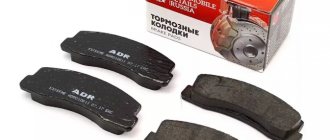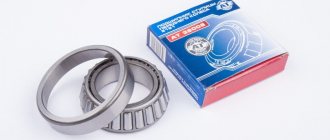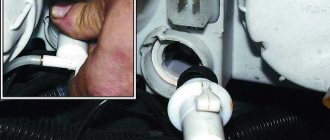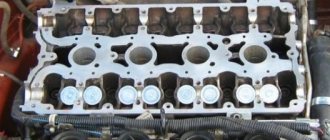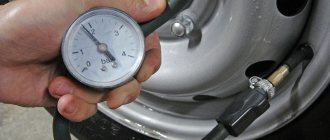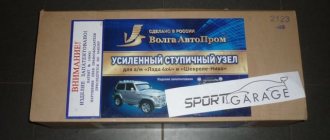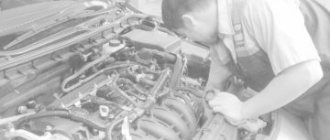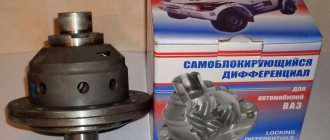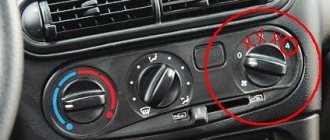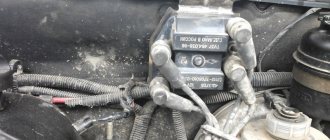What is a node
The name CV joint itself is an abbreviation for the phrase constant velocity joint.
The node faces the following tasks:
- Make the transmission of rotating torque from the engine to the wheels of the drive drive uniform and without loss of power.
- Reduce the load on expensive parts that rotate to move the car: shaft, gear, etc.
- Reducing the level of vibration when moving vehicles.
Modern front-wheel drive cars and some all-wheel drive “horses” are equipped with such homokinetic joints. The manufacturer guarantees the same duration of operation of the unit and the vehicle itself, provided that the CV joint is serviced and driven carefully. That is, if you drive carefully and periodically properly care for the part, it will last for the entire life of the vehicle.
The fulfillment of the first point depends only on the personality of the owner, his desire to monitor the technical and sanitary condition of the car. But the implementation of the second point on most domestic roads is sometimes simply impossible. And sooner or later the grenade (another name for the unit, which arose due to its external resemblance to a military projectile) fails. It is necessary to replace the internal or external CV joint on a Chevrolet Niva or on another car with a front-wheel drive and all-wheel drive design solution.
Device and features
The cardan transmission is a hollow steel tube. The metal thickness of the tube is from 1 to 2 mm. The following are welded to this tube on both sides:
- Splined tip;
- Hinge fork.
The fork of the second hinge is brought to the splined tip and put on it. This ensures a splined connection. This connection must be sealed with an oil seal, which is installed on the sliding fork.
So, torque on a Chevrolet Niva car is transmitted through cardans (front and rear), but we are only interested in the rear. On the Chevrolet Niva, the design of both the front and rear universal joints is almost the same, the only difference is the length of the device.
On restyled models, the design of the driveshaft has an improved appearance, and on models since 2010, the Chevrolet Niva is equipped with a drive shaft with joints of equal angular ends. The components of the rear cardan of Chevrolet Niva models before 2010 and the CV joint shaft of models from 2010 are shown in the photo below.
Picture "A" shows a steel base called the shaft (2). There are crosses at both ends, connected on one side by a shaft flange (1) and a sliding fork flange (4). There is also a sliding fork (3). On restyled models, the cardan design has already acquired a distinctive appearance from earlier modifications of the Chevy Niva, and is a shaft with constant-velocity joints (B). The image shows that the shaft consists of a tube (7), the CV joint itself (5) on both sides and, of course, boots. The boot is designed to protect the connection from getting inside not only dust, but also water and dirt. It also keeps the lubricant from leaking out.
Checking the serviceability of the cardan transmission
The performance check is carried out with the PP box in neutral gear. The car is driven onto an overpass or inspection hole and shoes are placed under the wheels so that the car can move, but does not roll off the overpass. Let's start testing. The check is carried out for both types of structures:
- External inspection. All joints are inspected to see if the bolts are loose, and what condition the boot is in.
- Next, the shaft is grasped with both hands on the side where the connections are checked, and rocking is carried out with sharp movements. If there is a slight backlash, then the design is faulty. There should be no backlash.
- With sharp movements it is necessary to rotate the shaft around its axis of rotation, while holding the hinge fork-flange with one hand. There should be no circumferential gaps.
When does a device need to be replaced?
When the design of the device, so to speak, loses the balancing of the plates, or all parts of the product are replaced, then upon completion it is imperative to re-balance the driveshaft. If, after balancing, the problems with the product malfunction are not eliminated, then the shaft assembly with all elements is replaced. If the shaft is not balanced, this will gradually lead to an increase in the amount of vibrations, especially at a speed of 60-80 km/h.
Balancing the cardan is done either by visiting a service station, where specialists will perform all the related work, or independently, which will save money. But that is another story.
Removing and replacing the driveshaft
Removal and then replacement of the cardan on Chevrolet Niva versions before 2010 is carried out in the following order:
- The vehicle is installed on the overpass. At the gearbox, the lever is placed in the neutral position, and the parking brake is in the down position. Shoes are installed under the wheels for safety.
- Before removal, it is necessary to make notches on the ends of the flanges, drive axle and transfer case at the joints. This will help return the shaft to its original position without the need for balancing.
- The nut of the cardan bracket is unscrewed, while supporting the bolt so that it does not rotate.
- All fastening nuts are unscrewed in the same way. There are four of them on one side. The nuts are Teflon coated to prevent self-turning.
After removal, even if the shaft is not replaced, it is recommended to replace the nuts with new ones.
Removing the cardan from the CV joint
Many Shniv owners drive new models, so it will be relevant for them to imagine the procedure for removing the cardan from the CV joint.
- First of all, the car is placed in neutral and the parking brake is in the down position.
- A stop is placed under the transfer case, which can be adjusted.
- The nuts securing the side brackets of the transfer case suspension and the two rear mounting nuts are unscrewed.
- The box is lowered until it comes off the bracket studs.
- The cardan is rotated and the nuts securing the shaft to the drive axle flange are unscrewed and removed.
- To unscrew the nuts, you will need to install a special blade in the hole between the flange and the CV joint. After this, the CV joint is pressed out with this blade until it moves slightly from the shaft splines and, thus, allows the nuts to be unscrewed.
- Now, using two blades, you need to press the CV joint until the fastening studs come out of the slots in the drive axle flange.
- The transfer case, which has been removed from the studs, will allow this manipulation to be performed. If you do not remove the transfer case, then the free play of the connection of the splines of both CV joints will be too small.
- Now you need to hold the shaft with one hand and with the other unscrew the four nuts securing the shaft to the transfer case flange. You can remove the shaft.
- The shaft was removed from a Niva Chevrolet car. Repair or replacement with a new one is carried out, and then assembly is carried out in the reverse order of removal.
You can not hold the shaft, but fix it with a strong rope to the bottom of the car, or use the help of a friend.
Replacing the boot with a CV joint
It is worth paying special attention to this important issue: How to properly install the boot on the CV joint? This question is very popular on forums, but unfortunately few people pay attention to such user sites. So, how to replace the boot on the cardan with CV joint of a Niva Chevrolet SUV is described below:
- A new boot is purchased, two if necessary, because there is one product on both sides. The cost of one is about 150-200 rubles.
- The cardan is removed, the procedure is described above.
- We take the device out of the hole and begin to remove the old worn boot. The plug is removed from the back of the hinge.
- The retaining ring is removed from the splined part, and then the hinge is removed.
- On the side where the boot is put on, there is another retaining ring, which also needs to be removed.
- We take out the hinge, and the order of the parts must be remembered. The worn boot is removed.
The boot can be removed by cutting; this sequence of actions is necessary to install a new element.
Thus, every driver of a Niva Chevrolet car will be able to independently replace the cardan using this information, regardless of the year of manufacture of his SUV. Good luck with the repair work, dear Shnivavody!
Varieties
SR as a suspension part began to be used on cars from the mid-20th century. Thanks to the unit, it became possible to simultaneously rotate and control the rotation of the wheels at an angle of up to 70 degrees. In the automotive industry, four technical solutions for components are used:
- cam;
- tripoid;
- ball;
- twin cardan shafts.
All these types are united by the basic design, which is a rigidly connected body and holder. The car's joints are also divided into:
- internal, rotating up to 20 degrees;
- external, more mobile and transmitting without power losses.
The part works according to the following principle.
- There are grooves on the surface of the inner race. Their number is the same as the number of bearings inside it.
- The cage is held in place by bearings that separate the housing and the cam.
- The bearings move along the path of the smaller diameter of the fist and the larger diameter of the housing.
- This creates a rotational impulse that transmits torque to the driven shaft.
If you change the angles connecting the axle shafts, the bearings begin to move inside the grooves. This is how torque is transmitted.
Reasons why a hinge joint fails
The internal CV joint on a Chevrolet Niva is a high-quality and reliable part of the automobile chassis system. Listed below are the main reasons that provoke early wear and failure of the unit.
- Incorrect, illiterate, extreme (rapid start with inversion of the drive drive and slipping) driving.
- Lack of care for a part that needs periodic cleaning and lubrication.
- Unfair production of the hinge assembly using low-quality materials and violation of technological rules.
Several signs listed below indicate that there may be a problem with the grenade and the internal CV joint on the Chevrolet Niva needs to be replaced.
- The appearance of a crunching sound when making turns. This phenomenon occurs if the SR requires lubrication of the connections, or a mechanical inclusion, for example, dirt, gets into it.
- Interruptions in the movement of the car at the start, when the speed increases or, conversely, when it decreases.
- Increased vibration when turning, accelerating, or driving at high speeds.
To make a final diagnosis, auto mechanics have created several simple techniques.
CV joints on Chevrolet Niva: what are they?
The purpose of the CV joint on a Chevrolet Niva is to uniformly transmit torque to the drive wheel, regardless of its angle of rotation. According to the design features, the parts are:
It is impossible to transfer rotation to a wheel with one CV joint on a Chevrolet Niva, so there is always a pair of them in the drive. The one located near the gearbox experiences a heavier load. It is easy to distinguish - it has large dimensions compared to the outer hinge. The external unit transmits rotation to the wheel. Its dimensions are also affected by the limited space in the area of the drive wheel.
Diagnostics
Experienced mechanics advise car owners to pay attention to the condition of the boots approximately every 5-7 thousand kilometers. Detection of any defects: cracks, failure of the clamp, indicates that the CV joint may be damaged. How can I check this?
- The car is placed on a lifting mechanism and engaged in first gear. A worn-out assembly will produce a sound resembling a characteristic crunching sound.
- An increase in play of one and a half tens of mm is a characteristic sign of failure. They check it by pumping the internal CV joint of the Chevrolet Niva at the output of the external drive.
You need to check the performance of the part periodically, every 4-5 months of driving on good roads. And every time after driving over rough terrain, dirt roads, potholes, etc.
Replacing the internal CV joint of a Niva Chevrolet
All parts of the unit are in constant motion during operation, as a result of which they wear out and fail. Therefore, most car owners are faced with the need to replace a faulty internal CV joint of a Chevrolet Niva with a serviceable one. Below is material for the step-by-step implementation of this work.
- The front of the car must be in an upright position. To ensure safety, it is necessary to place protective devices under it to ensure the immobility of the mechanism.
- At the very beginning you need to remove the wheel and the lower ball joint.
- Next, disconnect the shock absorber and the lower arm on the suspension, from which the spring is removed.
- The fist and hub are not removed, it is slightly hung to the side. To do this, you can adapt a generator belt or something similar.
- Then the cap and bearing nut are removed from the hub.
- The bolt that secures the right suspension bracket is unscrewed.
- At the assembly itself, you need to unscrew the nut and remove the grower, freeing up access to a larger threaded length. Using keys and a hammer, the SR is dismantled, removing it from the hub.
The hinge assembly on a Chevrolet is mounted in the reverse order.
Chevrolet Niva 4x4 Chevrolet Niva 2012 Replacing the driveshaft CV joint
The cover on the back of the CV joint, which everyone was so worried about that it would get crushed on the shank nut, can be removed quite simply: You just need to sharply pull the CV joint itself down so that it is pushed out by the axle. During assembly, I decided to seal it with sealant.
Next, remove the CV joint itself from the axle. We take either a thick piece of wood or a metal flat attachment, place it on that same incomprehensible washer and knock it down in the same way as a regular outer CV joint on a drive. If you are careful and do not try to disassemble the CV joint system, you can get by with little damage.
I decided to find out what that incomprehensible washer is for. With sharp movements it is necessary to rotate the shaft around its axis of rotation, while holding the hinge fork-flange with one hand. There should be no circumferential gaps. When does a device need to be replaced?
When the design of the device, so to speak, loses the balancing of the plates, or all parts of the product are replaced, then upon completion it is imperative to re-balance the driveshaft. If, after balancing, the problems with the product malfunction are not eliminated, then the shaft assembly with all elements is replaced. Balancing the cardan is done either by visiting a service station, where specialists will perform all the related work, or independently, which will save money.
But that is another story.
Chevrolet Niva 4x4 Chevrolet Niva 2012 Replacing the driveshaft CV joint
Removing and replacing the driveshaft Removing and then replacing the driveshaft on Chevrolet Niva versions up to a year is carried out in the following order: The vehicle is installed on the overpass. At the gearbox, the lever is placed in the neutral position, and the parking brake is in the down position. Shoes are installed under the wheels for safety.
Before removal, it is necessary to make notches on the ends of the flanges, drive axle and transfer case at the joints. This will help return the shaft to its original position without the need for balancing.
The nut of the cardan bracket is unscrewed, while supporting the bolt so that it does not rotate. All fastening nuts are unscrewed in the same way. There are four of them on one side. The nuts are Teflon coated to prevent self-turning.
After removal, even if the shaft is not replaced, it is recommended to replace the nuts with new ones. Three fastening bolts are removed from one side, and the fourth is left to fix the product in its original position.
We carry out the operations of unscrewing the nuts on the other side of the fastening. The order of unscrewing does not matter. The last bolt is removed from one side and the cardan is removed, while its parts are reduced to the slot. The product has been removed, it is now being repaired, and if this is not possible, it is being replaced with a new one.
